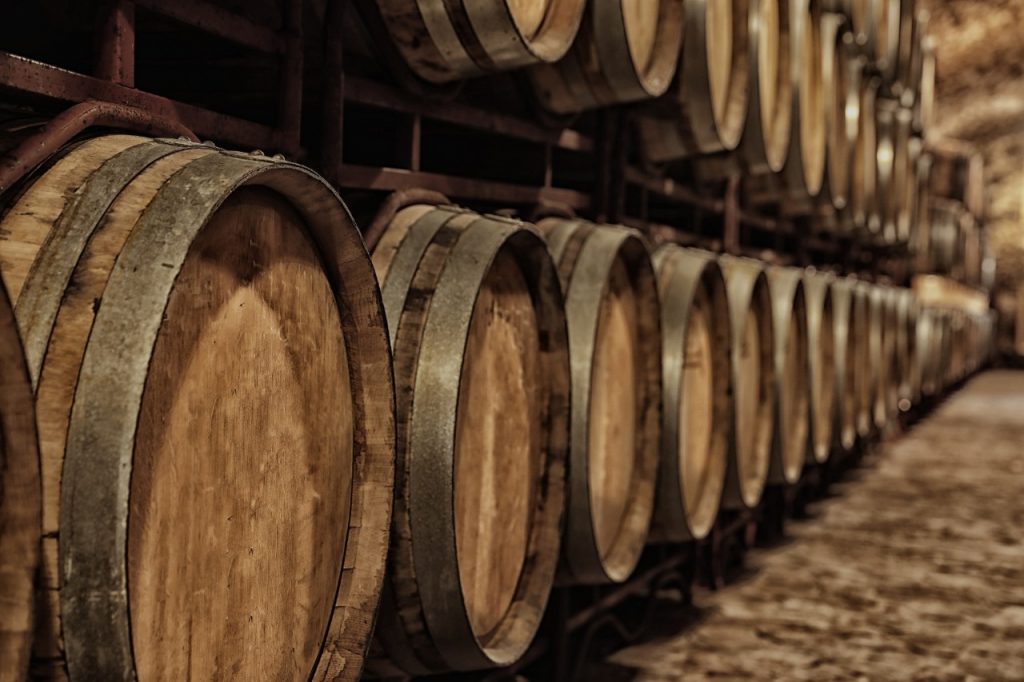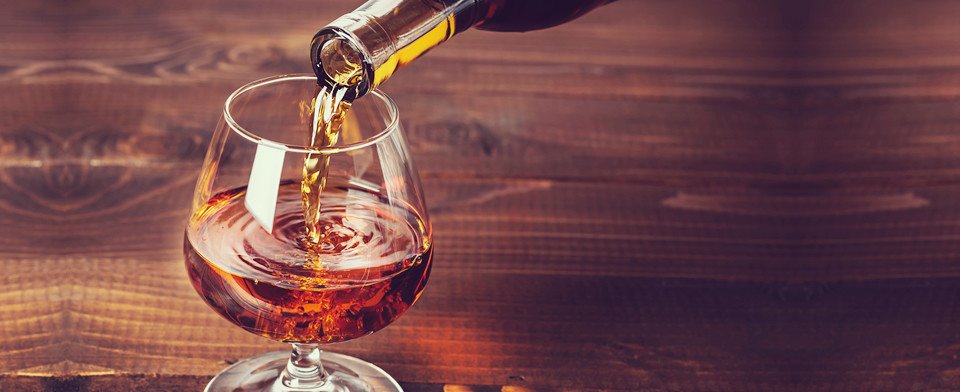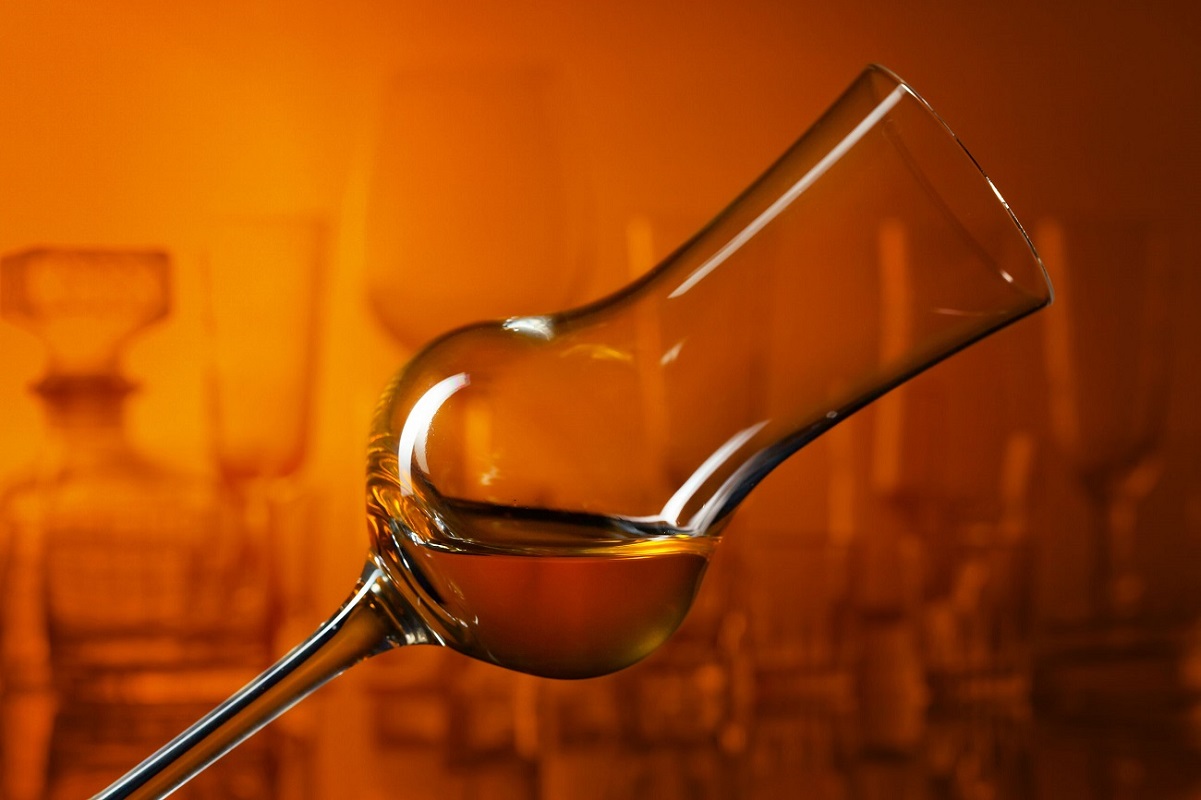Grappa is a spirit obtained from pomaces distillation of Italian grapes. Based on aging time, Grappa can be Young, Aromatic, Aged and Riserva Invecchiata.
Aging period for the last two is respectively longer than 12 and 18 months in wood. Grappa is ideal with spiced or chocolate desserts, if aged in bottle, whereas aromatic grappa goes well with fruit and semifreddo desserts.
What is Grappa?
Grappa, a typical Italian product, is produced by distilling the marc from the production of red wines, the solid part of the grape (skin and seeds) when vinification is complete and therefore already fermented.
History and Tradition
The history of grappa is lost in the mists of time. Distillation methods developed a starting from the eighth and sixth centuries BC in Mesopotamia, while the first evidence of that applied to vines to obtain a brandy date back to no earlier than the twelfth century by the alchemists. Also the distillation from the marc probably has very distant historical origins.
According to a legend, it is attributed to a Roman legionary of the 1st century. BC, after his return from Egypt, having stolen a distillation plant, and using the techniques learned they had started the production of a distillate from the pomace of a vineyard of which he was the assignee in Friuli.
According to the historian Luigi Papo, the first documented production dates back to 511 AD. in Friuli, ad work of the Burgundians who, during a short installation in Cividale, applied the same techniques used in distillation from apple cider to distillation from pomace, thus obtaining The grappa.
The techniques for distilling real grappa have been codified by the School Salerno around the year 1000. In 1779 the birth of the Nardini Distillery, in Bassano del Grappa (VI), with the introduction of the “steam” distillation method, determines a real e own revolution marking the beginning of modern distillation in Italy. Until the 50s, in Trentino, the most practiced technique, however, remains the fire distillation.
With this method the pomace is heated with the fire bringing it to a boil, the alcohol thus obtained underneath form of gas, it is subsequently condensed. Until the 70s the classic grappas were produced from undifferentiated pomace.
Only a Piedmontese company, the Distilleria Bocchino di Canelli, in the heart of Asti, had been producing grappa for a long time (1898) from only muscat pomace, abundant in the area.

Grappa Barrels
The idea of producing a range of grappas so-called single-variety, or produced from a single type of grape, has in fact changed the perception of grappa from a low-level product to a prestigious distillate; this “turning point copernicana “in the world of grappa is due to the Nonino family who, in 1973, recorded the single-variety term (in particular to recover the distillate of picolit, a native grape variety Friulian who at the time was in danger of disappearing).
The Noninos themselves were born in 1984 grape brandy, distilled from grapes, intended as a fruit.
How is the Grappa made
The quality of grappa depends primarily on the quality of the pomace used, and in secondly by the skill of the master distiller.
The stills are divided into two main categories, the continuous ones and the discontinuous ones. The first they work, as their name says, all the time. Fed with marc they return a alcoholic phlegm which is subsequently elevated to the rank of brandy through a second distillation.
The latter, on the other hand, work in cooked, loaded into the boiler (or cucurbit) material to be distilled, it heats up, the alcohol and substances are used up it contains, taking great care to take only the heart, and finally, it discharges the boiler.
The best distillation takes place slowly, delicately, by means of old traditional ones stills, where the steam passes through the spongy mass of the marc to extract the part less volatile and transmit its aromatic substances to the vapor.
Aging, which is not essential, takes place in fine wooden barrels, which yield to grappa, through the release of tannins, its own aromatic charge giving us a more distillate noble and complex. The organoleptic characteristics acquired will depend on the type of wood, the time that grappa spends in barrels and the climatic conditions in which it occurs
the refinement.
Grappa glasses
Grappa glasses, properly called “Grappa glasses”, are chalices formed by foot, stem and body, with a shape that enhances the distillate and releases all its flavors and aromas.
If in the past no particular attention was paid to the glass to use to enjoy a glass of grappa, making the classic bitter glass or the so-called “grappino” suffice, today, connoisseurs and non-connoisseurs wonder which is the best, given the different types commercially available.

Grappa Drink
In general, there are three glasses that can be used, to be chosen according to the type of distillate: narrow tulip goblet, wide tulip goblet and balloon. The first is ideal for white grappa, the second is perfect for barrique grappa and the third is suitable for very aged grappa, those for meditation.
In fact for grappas with over 10 years of aging, the glass takes on an aesthetic and ritual, as well as functional importance.
This type of grappa is completely similar to the great international spirits and deserves exceptional glasses, for meditation.
In this case, glasses are not needed, but glasses that can be taken between the palm and allow excellent oxygenation of the distillate.
Best Italian Grappas
Grappa Capovilla Amarone Legno
Capovilla is famous not only for the production of high quality Grappa, but for its ability to create fruit distillates that are unique in the world.
At the center of Capovilla’s work is the raw material, and this is the most important thing.
The Grappa di Amarone legno Capovilla comes from the pomace of Corvinia, a vine typical of Veronese, in particular of Valpolicella, with an intense and spicy aroma. The pomace, chosen with obsessive care by Vittorio Capovilla, must be completely healthy and must not have undergone chemical treatments. They are then distilled in a discontinuous cycle in a water bath.
The distillate is then left to age for about four years in oak, ash, cherry, black locust barrels, to enhance and make more complex the intrinsic qualities of the product itself.
Description
Grappa di Amarone legno is excellent right from the start, with an alcohol content of 41%
The color is transparent
The perfume is intense and enveloping, with notes of cherries and violets
The taste is balanced and very persistent.
Poli Sassicaia Grappa
GioBatta Poli, the founder, set up his distillery in 1898 in Schiavon, near Bassano del Grappa, in Veneto, a region very rich in grappa production. Poli also did his utmost to build the first Grappa Museum in Bassano, opposite the famous Ponte Vecchio.
Grappa Sassicaia takes its raw materials, the marc, in Tuscany near Livorno, with 80% Cabernet Sauvignon and 20% Cabernet Franc from the S. Guido di Bolgheri estate.
The pomace of Sassicaia is left to ferment in their must, then they are transported to the distillery and processed immediately in ancient copper stills in steam-powered boilers, in a discontinuous cycle. Poli defines itself as an “artisan distillery” because it is processed in small batches.
The resulting product is stored for 4 years in barrique and in the last 6 months in oak barrels in which the Sassicaia wine was previously deposited, from which it receives aromas and perfumes, which are then conferred to the grappa itself.
Description
Straw yellow aspect
Nose: fresh scent of cut flowers followed by a note of dried fruit which also leaves a faint scent of coffee.
Palate: Flavor of wine, cherries and toasted almonds, in a well-blended and tantalizing mix
Final: long, persistent and engaging
It is a grappa with an alcohol by volume of 40%, in a bottle of 50 cl.
Mazzetti d’Altavilla 7.0 Grappa di Ruche Invecchiata in Barriques
Mazzetti: a distillery founded in 1846 in Piedmont and permanently located by the founder’s son in Altavilla Monferrato, where it still exists today. Even the Mazzetti family has remained the owner of the company for many generations, up to the 7th, in fact.
Grappa Mazzetti 7.0, single-variety, was proposed on the occasion of the company’s 170th anniversary and was made with particular attention to young people, their alcoholic tastes and their low environmental impact choices.
The Ruché vine, from which the fresh and moist pomace used for this grappa comes, is native and rather rare: it produces very few bright red grapes, very sugary, to obtain an aromatic wine, rich in polyphenols and tannins, which became DOCG in 2010.
It should be noted that the distance between the cellars and the distillery is just 10 Km: we can therefore speak of Km Zero, as well as the environmental impact, thanks to the use of renewable energy sources.
The alcohol content of Grappa Mazzetti 7.0 is 43% and it is an excellent product that is distilled for 1 year in steel.
Description
Appearance is golden
Nose: very intoxicating perfume, in which floral and fruity notes of violets, jasmine and cedar emerge
Palate: soft and velvety, slightly sweet despite 43 °, transmits a delicate honey flavor, mixed with a hint of spices and almonds.
Final: persistent for a long time
Grappa Of Amarone Barrique – Bonollo
Bonollo Of was born and takes its name from 100% Amarone della Valpolicella pomace, taken from Corvina, Corvinone and Rondinella grapes. It is then aged for 18 months in French oak barrels, from which it acquires the typical amber color and the characteristic aroma of caramel and vanilla.
The Bonollo distillery has been claiming ownership of the distillery for four generations, since 1908, always family-owned, acquiring more and more experience, to add to the tradition.
The package, in a refined opaque black box, is enriched by an elegant copper foil, with the word OF, which recalls the ancient stills in which the first brandies were distilled.
Description
It is offered in a 70 cl format, with an alcohol content of 41%
Appearance: golden amber
Nose: vanilla, spice, licorice
Palate: rich, warm flavor, full of sensations.
Sibona – Grappa Riserva, 40 % Vol
The Sibona distillery was born about 100 years ago in Alba, in an area of Piedmont rich in noble vines such as Nebbiolo (from which Barolo and Barbaresco are obtained) and those of Barbera, Dolcetto, Moscato, Chardonnay and Brachetto.
Sibona has obtained the distillation license n. 1, issued by UTF, the financial body that supervises the distilleries.
Sibona defines itself as an “artisan company”, with the production of single-variety grappas, through the distillation of fresh pomace, just brought to the distillery, to preserve its aromas and aromas.
In 2018 and 2019 Sibona was awarded the distillery certificate of the year by the Meiningers International Spirits Award, as a demonstration of the excellent quality of its products.
The Gran Riserva is a multi-variety grappa, in which the pomace comes from Moscato and other Piedmontese vines. After a careful selection of the best pomace used, the product is processed in copper stills, thanks to the experience of expert winemakers.
Refinement takes place in stainless steel tanks. Afterwards the distillate is aged for 2 years in oak barrels and for the last 24 months in barrels that have contained Madeira.
Madera is a fortified and strong Portuguese wine, because it can withstand very high temperatures, improving its characteristics and flavor.
These characteristics, of course, pass into the distillate that matures in these barrels.
The alcohol content is 44% and the packaging is refined, with a graduated bottle (protected by a patent) to indicate its content, as was the case in the containers of the old herbal shops.
Description
Appearance: amber
Nose: light scent of peach blossom combined with hints of orange
Palate: rich flavor that leaves a floral taste
Best Grappa Prices
| # | Image | Grappa | Price(€) | (€/l) |
|---|---|---|---|---|
| 1 |  |
Capovilla Amarone Legno | 60,35 | 120,70 |
| 2 |  |
Poli Sassicaia Grappa | 64,00 | 128,00 |
| 3 |  |
Mazzetti d’Altavilla 7.0 Grappa di Ruche Invecchiata in Barriques | 35,30 | 50,42 |
| 4 |  |
Grappa Of Amarone Barrique – Bonollo | 39,82 | 56,89 |
| 5 |  |
Sibona – Grappa Riserva,40 % Vol, 500ml | 28,62 | 57,24 |
